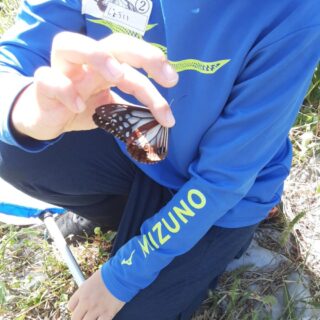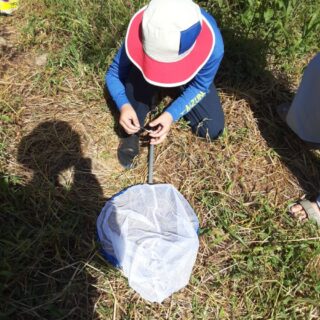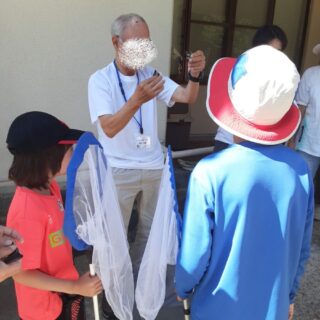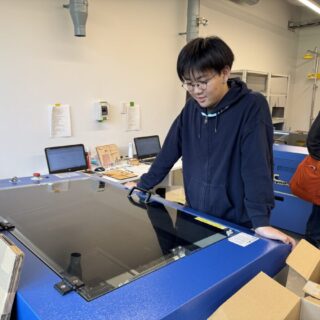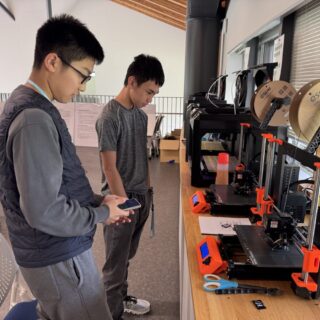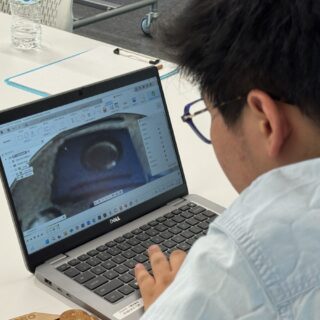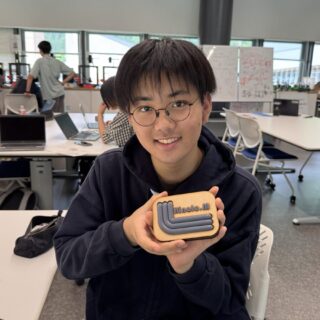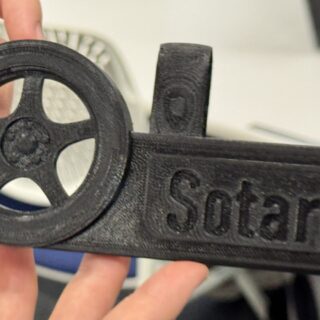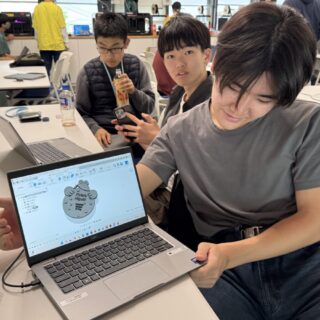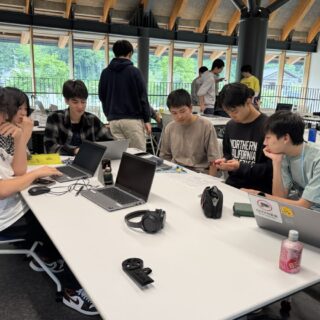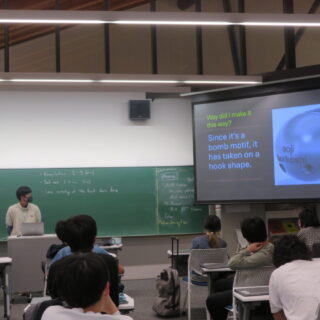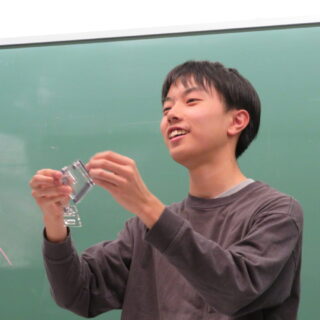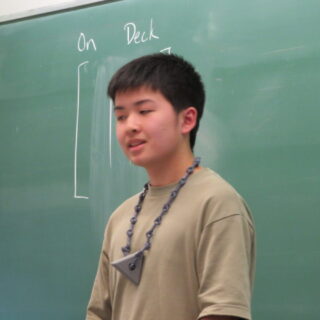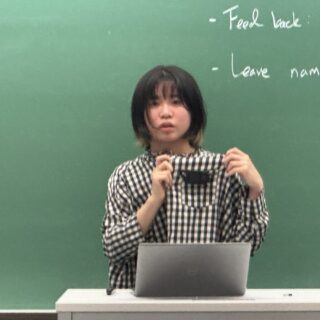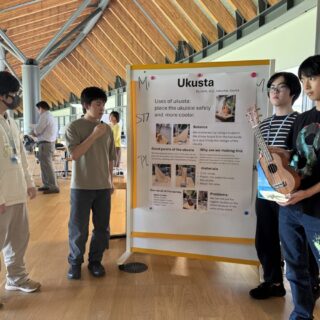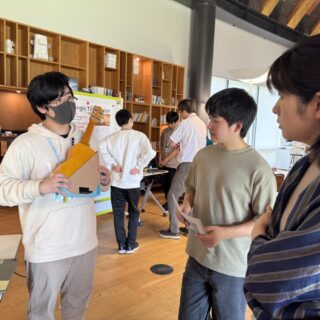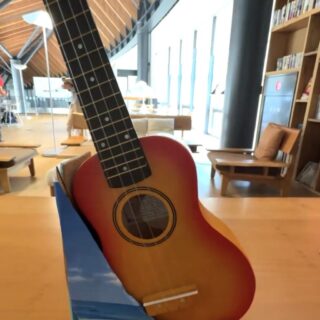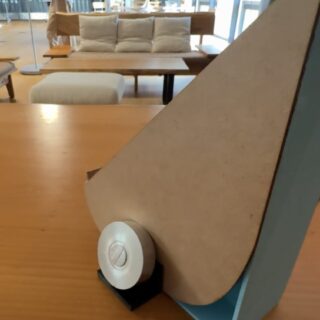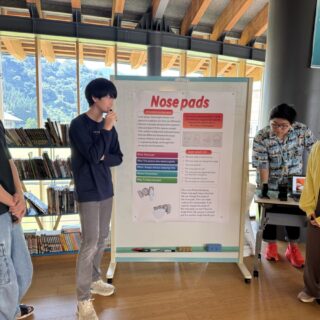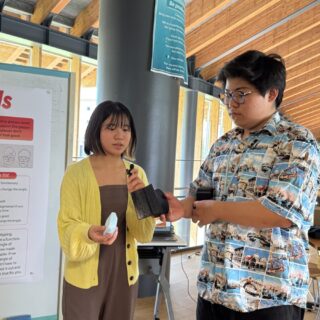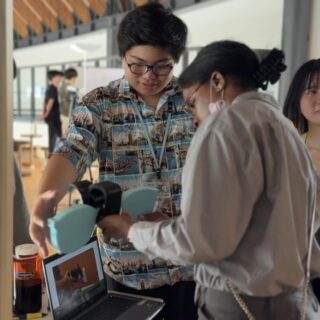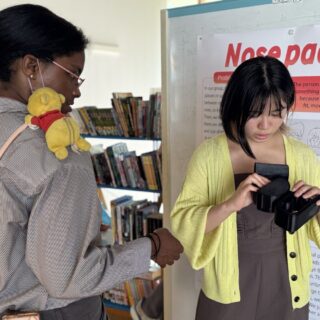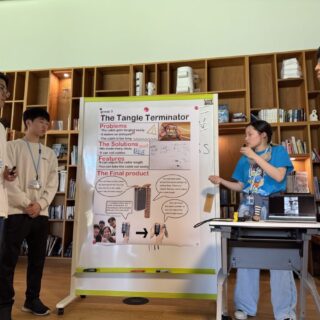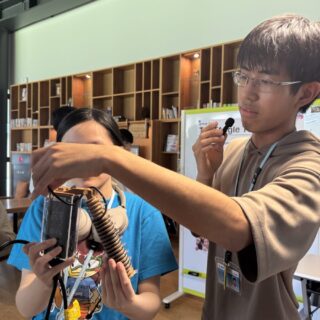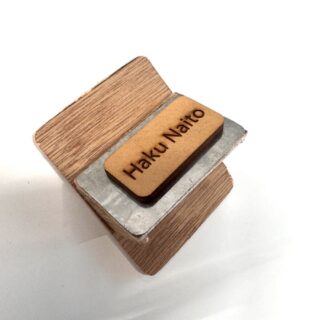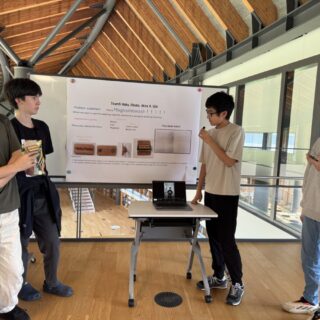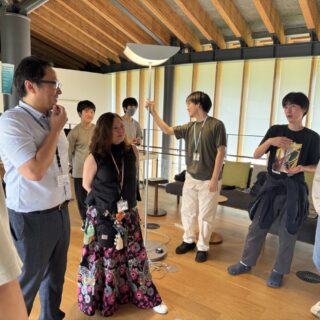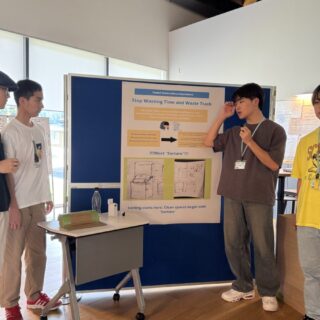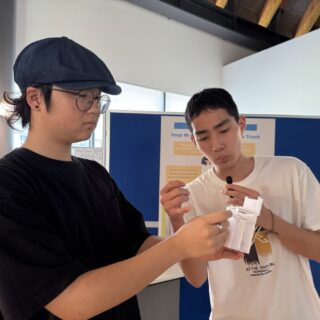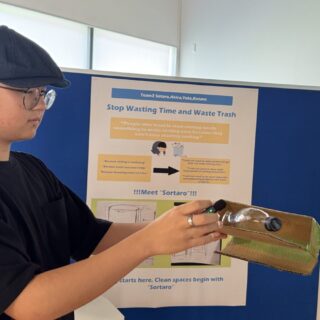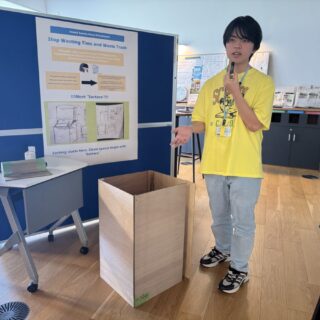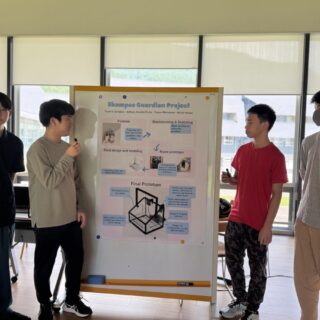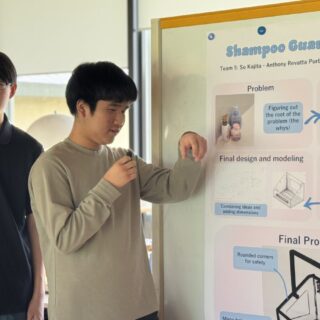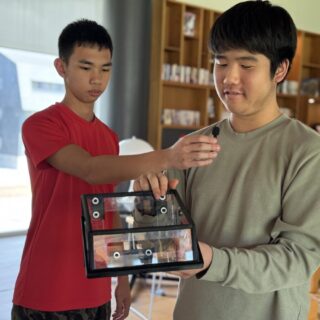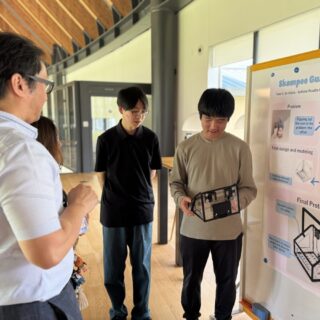 Hello everyone. I’m James Taylor, one of the English teachers at ICT’s Hakusanroku Campus.
Hello everyone. I’m James Taylor, one of the English teachers at ICT’s Hakusanroku Campus.
One of the best things about living and working at Hakusanroku Campus is the abundance of nature that surrounds us. We get to see a wide variety of interesting creatures up close. An example of this is the Chestnut tiger butterflies that appear in the Seto area at the end of every September.
Chestnut tiger butterflies are known in Japanese as “Asagimadara”. They are an interesting type of butterfly because they migrate very long distances, and one of the places they stop en route is just a few dozen metres down the road from our school. To encourage the butterflies, local residents and community groups plant Boneset (“Fujibakama” in Japanese) in disused allotments – like those near the Roadside Station Sena opposite ICT -- and call it the “ASAGIMADARA SORANOEKI (Sky Station)・HAKUSAN”. The Asagimadara Fan Club Hakusan conducts a marking survey here every year. On Saturday, September 27th, 2025, my son and I participated in a butterfly marking event organised by the Asagimadara Fan Club, Oguchi Community Centre, and the Hakusanroku Satoyama Revitalisation Council.
First, we listened to a lecture by Mr. Nakamura of the Asagimadara Fan Club Hakusan, who told us about the butterflies’ life cycle and migratory behaviour. Mr. Nakamura showed us examples of Chestnut tiger butterflies that he’d caught and marked, then gave an explanation and demonstration of how to mark them. Once they’ve been caught, the butterflies play dead, so it’s easy to write on the white part of their wings. Using a felt tip pen, you have to carefully write the location (Hakusan or 白山 for us), the date (9/27), then our name or initials and a number to denote the order in which we caught and marked the butterfly. We also had to write all this information on a paper so that Mr. Nakamura could enter it online and share it with other Asagimadara Fan Clubs in other regions of Japan. We also had to write our contact details, so that if someone catches a butterfly we’ve marked, we can be contacted and told where it got to.
In previous years, Chestnut tiger butterflies that have been marked in Seto have later been found in places like Shikoku, Kyushu, Okinawa, and even Taiwan – that’s over 2,000 kilometres from Seto. The changes in the weather have meant that last year and this year there weren’t so many butterflies, but my son managed to catch and mark three.
I wonder how far they’ll travel.
James Taylor
Related Articles on Last Year’s ICT Chestnut Tiger Butterfly Marking Event

Project 1:Creating Name Tags
Hello everyone, this is Brandon Wohlfarth, one of the Engineering Design teachers for the 1st year students. Within our Engineering Design course here at ICT, students get the chance to work on a wide range of projects, but to help “introduce” the students to the design process, their first project was to create individualized nametags.
There were some criteria that the students needed to follow during the project: their nametag needed to be able to be worn, it needed to fit within a certain volume, it needed to be made using the 3D printers and/or laser cutters that we have here at Hakusanroku Campus, and it needed to visually show important characteristics about the designer.
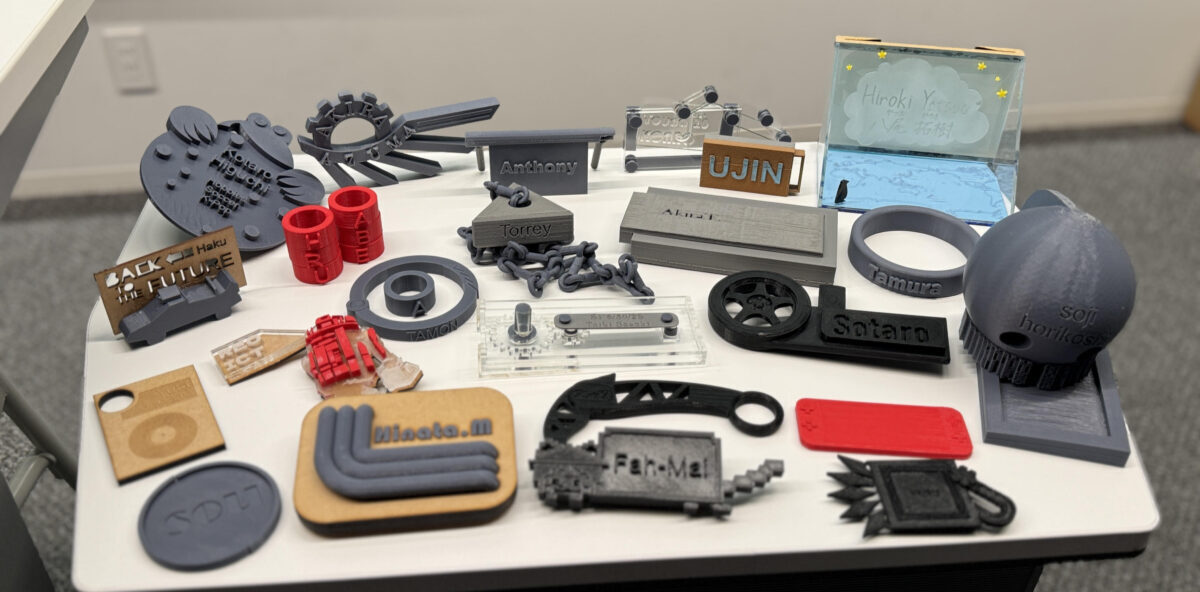 During this project students walked through how to come up with ideas, practiced prototyping, and learned about the connections between features and functions. This project culminated in a presentation where the students were able to “introduce” their nametags to their classmates, and practice their English-speaking skills.
During this project students walked through how to come up with ideas, practiced prototyping, and learned about the connections between features and functions. This project culminated in a presentation where the students were able to “introduce” their nametags to their classmates, and practice their English-speaking skills.
What I enjoy the most about Engineering Design is that, unlike tests and quizzes, there isn’t just one right answer to how to solve the problem. It was very interesting to see how the students decided to approach the challenge ahead of them. Many students focused on creating something that helped introduce their hobbies, or maybe a certain source of media that they enjoyed, allowing them to add parts of their personality into their final creation. This is just the first design experience for the students, so I am looking forward to where they go from here.
Project 2:Solving Problems through Teamwork
Within the first semester the first-year students also worked on a team project in Engineering Design IA. The goal of this project is for students to observe the world around them and identify the “Worst thing that they use everyday” and try to find a solution their individual pain points regarding the topic selected. An aspect of this project that I enjoy seeing is how students perceive and approach different challenges or inconveniences that they experience in their daily life. Each group tackled a very different problem, but they still needed to understand how an object is used, what are important features needed to complete a desired function, and a little about how people are an important part in designing a new product. We always get some interesting projects when we do this activity, so I am excited to share them all with you.
1. Ukusta
This group decided to take on the challenge of designing a new stand for the ukuleles found in the Living Commons at the Hakusanroku Campus. They wanted to make something that would stabilize the instrument while also helping to improve the visual aesthetics of the space.
2. Nosepads
This group decided to devise an adjustable attachment that could fit with various glasses or sunglasses, in order to help match the shape and contour of different noses. Due to the size that this type of attachment would need to be, for demonstration purposes only, their prototype was an enlarged version of their design.
3. The Tangle Terminator
This group decided to envision a way to help organize their laptop charging cables to improve upon its ability to be stored inside of a backpack, as most students do. They found that inside of the backpack, the cables tended to become tangled easily, which lead them to address this issue within the scope of portability.
4. Magnamewash
This group wanted to find a way to help organize the use of the laundry facilities within the Hakusanroku Campus dormitories. They wanted to help solve the issues of not knowing who is using what machine in an easy to install, easy to use way that would transfer information quickly and clearly.
5. Sortaro
This group found that sorting trash can be a difficult and time-consuming activity, and as someone who even after years of living in Japan still has challenges understanding this system I can relate. They wanted to make something that would still properly sort various types of garbage, but be in one easy to use location.
6. Shampoo Guardian Project
This group wanted to address the lack of shelving space within the showers at the Hakusanroku Campus dormitory. They wanted something that could be used within the shower stalls on campus, that was easy to carry and to access the various bottles that they wanted to use while showering.
I am looking forward to what they do in the second semester!
Brandon Wohlfarth
 Hello everyone. I’m James Taylor, one of the English teachers at Hakusanroku Campus.
Hello everyone. I’m James Taylor, one of the English teachers at Hakusanroku Campus.
On Wednesday 24th September, I went to Shiramine to lead an English Café event for children. English Café began in January 2020 as a way to build positive relationships between local residents and people affiliated with ICT, mainly by offering opportunities to communicate in a relaxed environment.
Like last summer, this summer’s event was held at Shiramine Community Centre. Nine children from Shiramine Primary School, one from Hakurei Primary School, one baby, along with three adults (plus the staff who helped organise the event) attended. After greeting each other loudly in English to start the event, we played a game called “What’s the time, Mister Wolf?” This is a popular playground game that I remember playing when I was a boy. It’s similar to the Japanese game “daruma-san ga koronda”, but there are some differences. In the English game, the “wolf” is asked “What’s the time?” and the number he or she says is the number of steps the group has to take. The wolf is not allowed to look, and if the answer to the question is “dinner time!”, everyone has to run to the safe zone before the wolf touches them!
We took turns being the wolf, then settled down for some snacks while doing a quiz about my home country, the United Kingdom. During the summer I was able to visit the UK and take lots of photos of typical things, unusual things, and famous things.
We ended the event with three stories: “A Squash and a Squeeze” by Julia Donaldson, “The Pigeon Wants a Puppy” by Mo Willems, and “Five Little Monkeys Jumping on the Bed”, which gave the children a chance to join in by saying “no more monkeys jumping on the bed!”.
Overall, it was a successful event, thanks mainly to the hard work of the staff at the Shiramine and Oguchi Community Centres. I always enjoy the opportunity to spend time with local residents, and I’m looking forward to the next English Café.
James Taylor
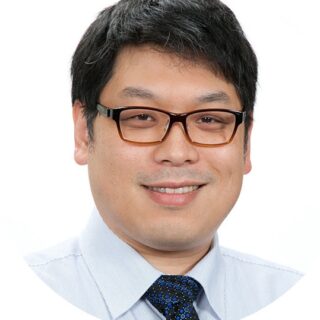 Hello! This is Meguru Ito, the advisor of the Design & Fabrication Club. This time, I'd like to introduce a special project we did as part of our club activities called ICT-Collection 2025 Summer.
Hello! This is Meguru Ito, the advisor of the Design & Fabrication Club. This time, I'd like to introduce a special project we did as part of our club activities called ICT-Collection 2025 Summer.
At the Hakusanroku Campus, we have a fascinating machine called a garment printer, which allows us to print directly onto items made from fabric, like T-shirts and tote bags. When students said, “We want to make all kinds of things!” I decided to organize an event where they could design and print their own original T-shirts using the garment printer. As summer gets hotter, I thought it’d be fun to make a unique T-shirt that could make school life and summer break even more enjoyable.
I set a few design rules to guide the creative process:
・Designs must be original (photos, illustrations, logos, etc.)
・No photos or illustrations created by others
・No AI-generated artwork
・Must include either the school or club logo.
These rules are meant to help students develop their creativity and apply the skills they've learned in class and through extracurricular activities. The final T-shirts turned out to be incredibly cool and full of personality! Check out the video to see them in action.
I’d like to share the unique themes and sources of inspiration that each student used in their design. Here are some comments from the students.

Akira Azuma, a 1st year
While I was playing a game where I operated a tank, I thought it would look cool to put a tank on a T-shirt. That’s how I came up with this design. The tank printed on the shirt is the M1A1 Abrams, the main battle tank of the United States.
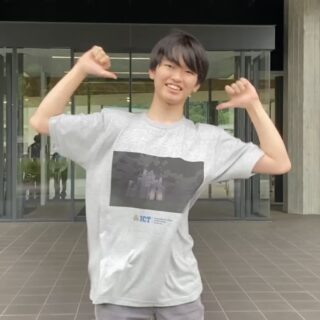
Haru Abe, a 1st year
I used my skills in Minecraft to design a magical castle under the summer night sky.
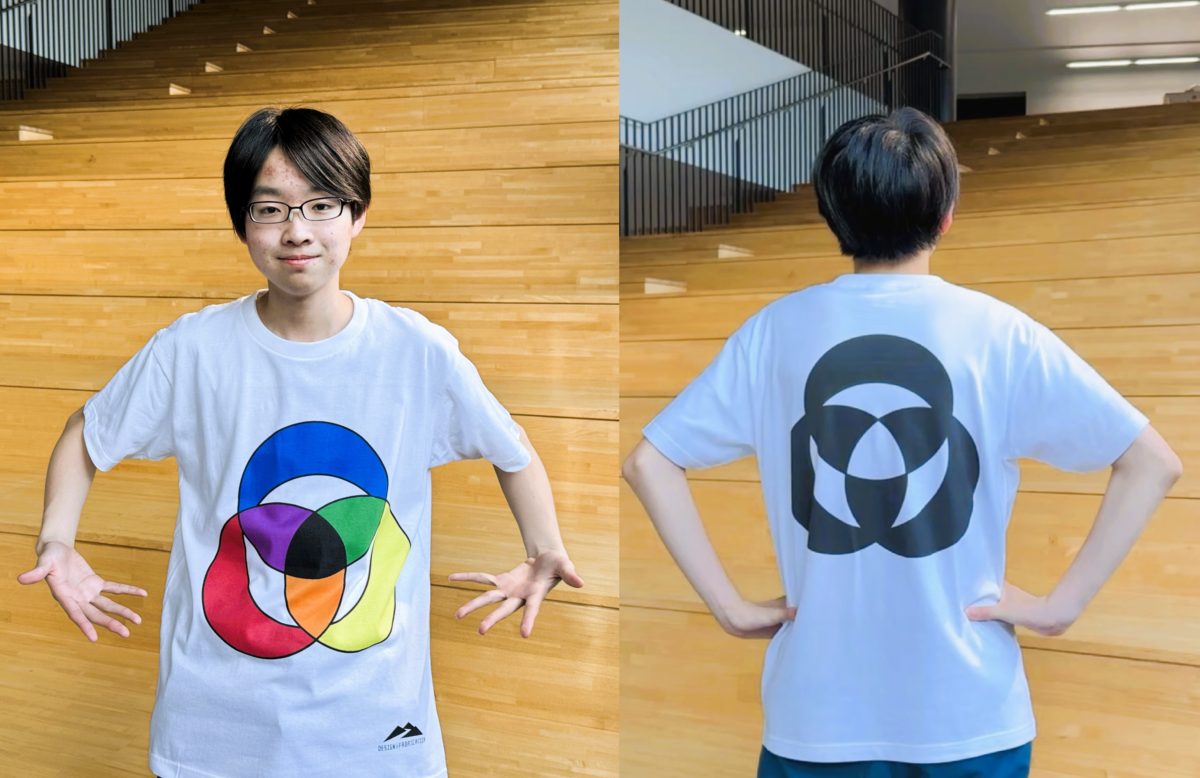
So Kajita, a 1st year
I drew a Reuleaux triangle(ルーローの三角形). The name “Reuleaux triangle” mixes foreign letters and kanji, and when I was in elementary school, I loved the feeling of knowing something that no one else did — that’s why I became fond of this unique shape.
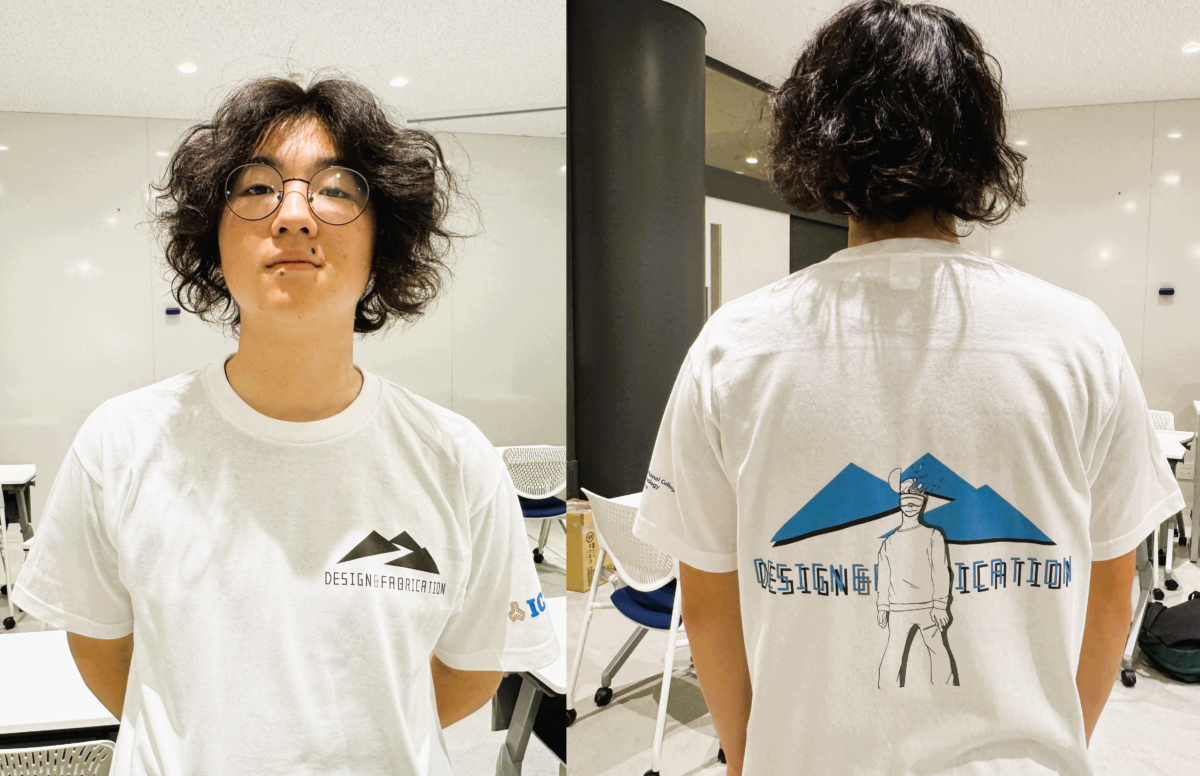
Sotaro Kato, a 1st year
I created this illustration inspired by the ICT students.
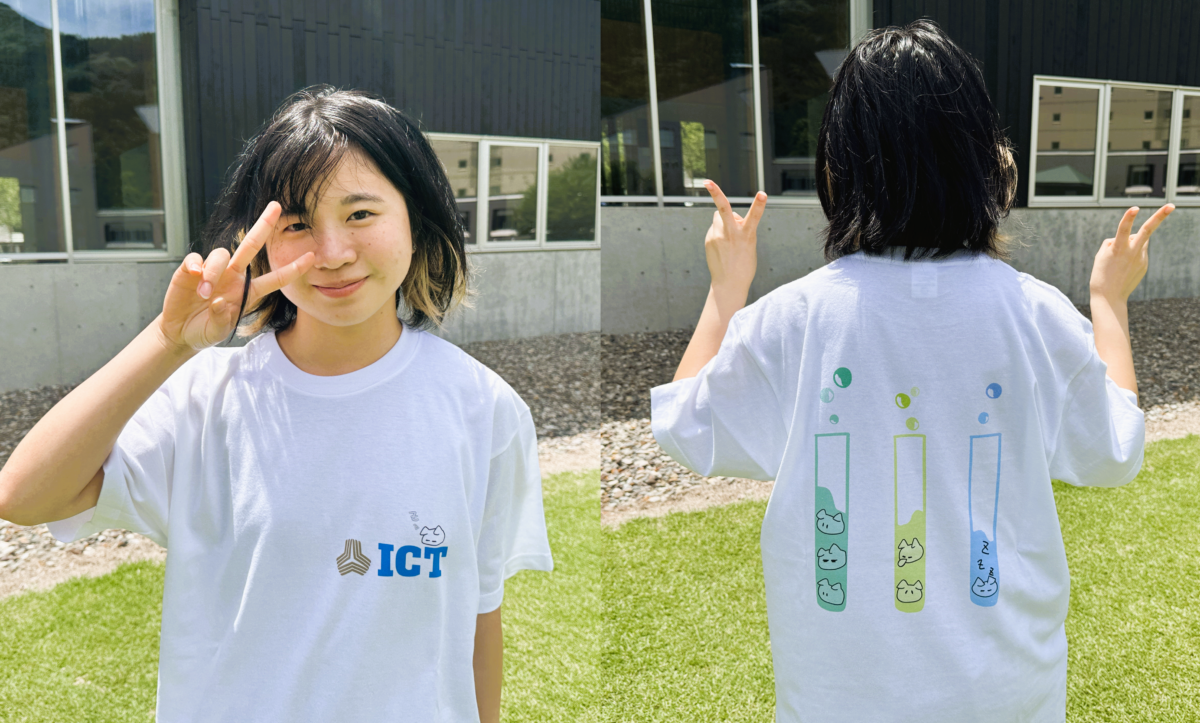
Reika Kubo, a 1st year
Lately, chemistry has become my favorite subject, so I created an illustration inspired by a test tube experiment!
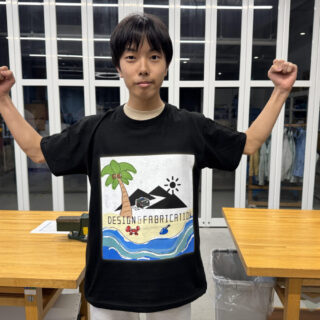
Touna Konno, a 1st year
I personally like how I combined the contrasting elements of mountains and the sea into a single illustration.
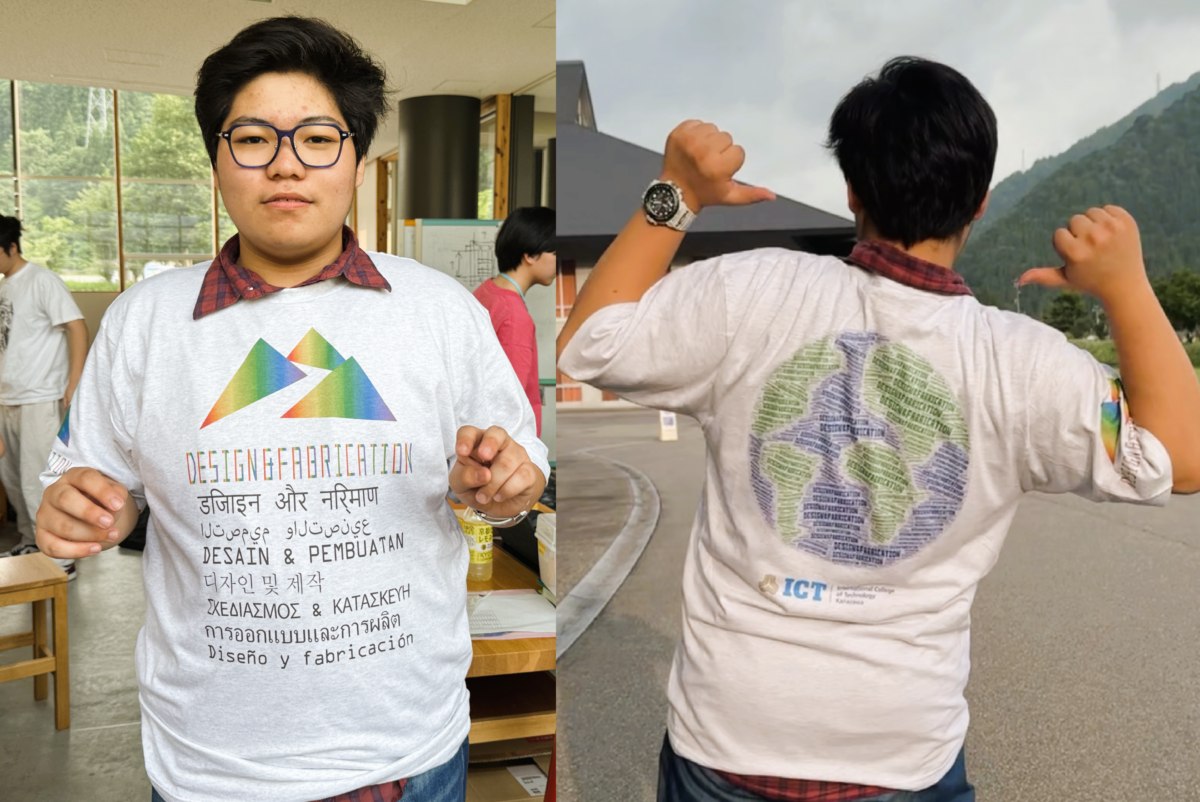
Reo Sakai, a 1st year
To express the spirit of ICT, I used multiple languages and an image of the Earth.

Taiki Sasaki, a 1st year
I played the clarinet in the school band during junior high, so I chose this design to reflect that memory.
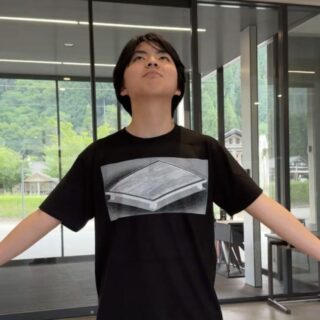
Akira Terashima, a 1st year
Due to a mistake in the cart's dimensions, this image now serves as its memorial.
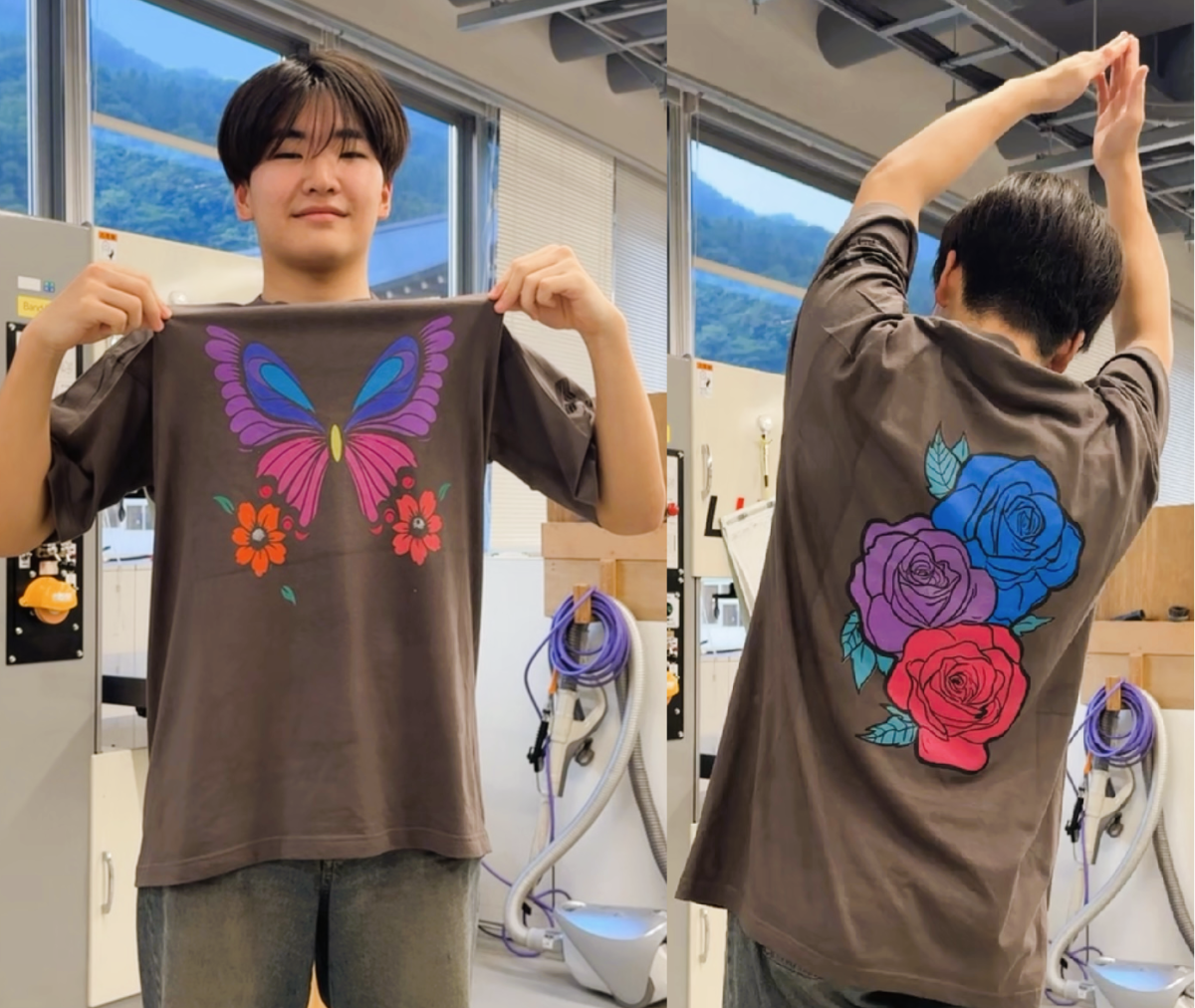
Kotaro Higuchi, a 1st year
I wanted to create a beautiful design, so I chose butterflies and roses.
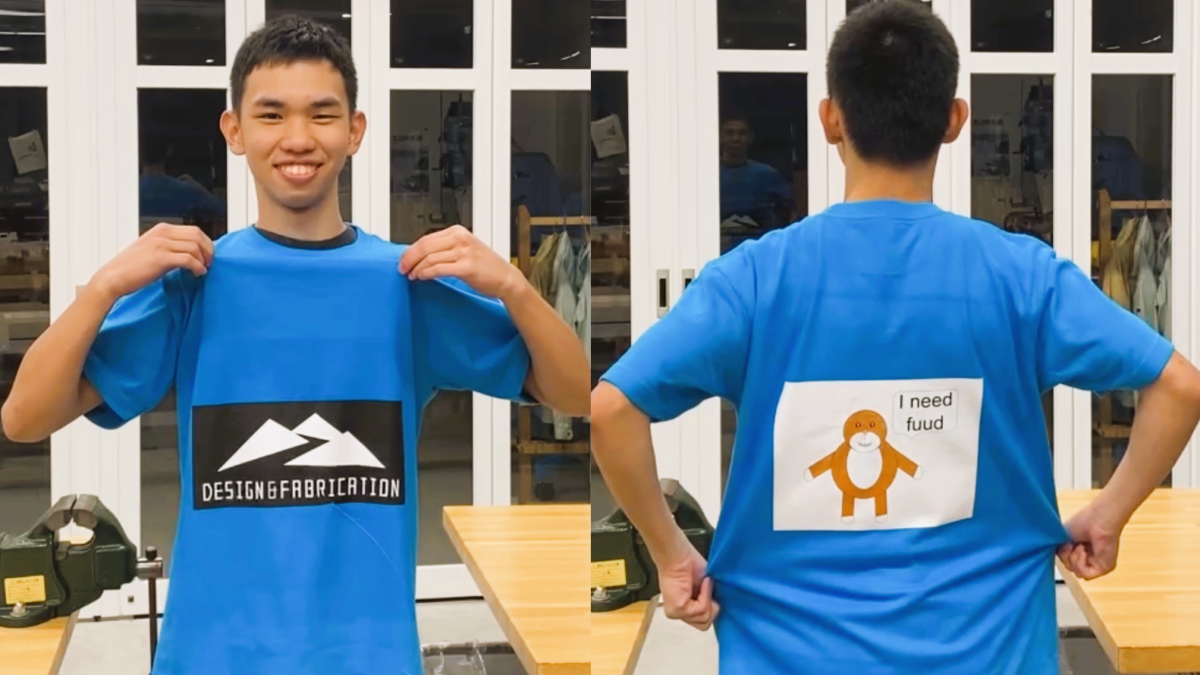
Purba Anthony Revatta, a 1st year
I made this because it was inspired by my Roblox avatar which is a hamster. I also wrote "I need fuud" because hamsters like food.
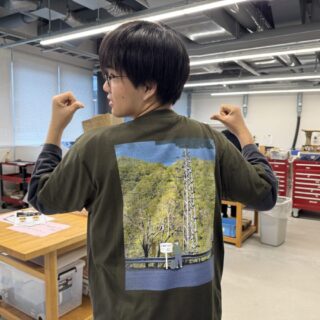
Hinata Miyazaki, a 1st year
While looking back on my memories of ICT, I added illustrations to photos taken around the ICT area.
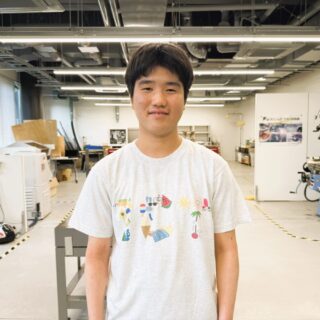
Hiroki Yatsuo, a 1st year
I gave the letters 'ICT' a summer vibe.
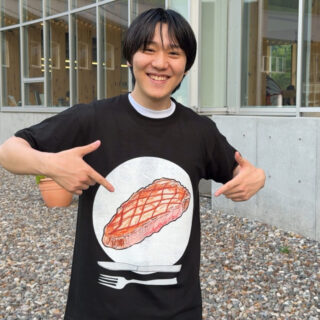
Soma Ioroi, a 2nd year
I made a delicious-looking steak.
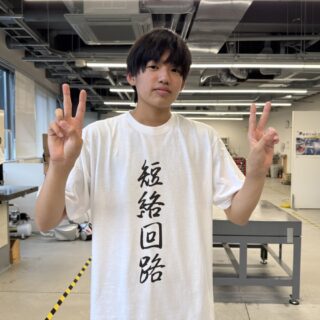
Kaishu Ishiharada, a 2nd year
This design reflects my intention to avoid short-circuiting the circuit.
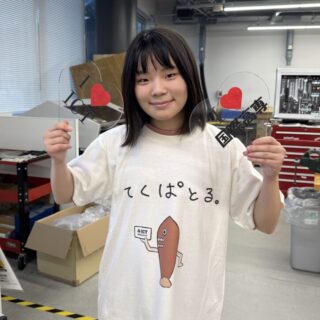
Ayane Ito, a 2nd year
I fell in love with Tecpatl at the Ancient Mexico Exhibition, and turned it into a cute character design!
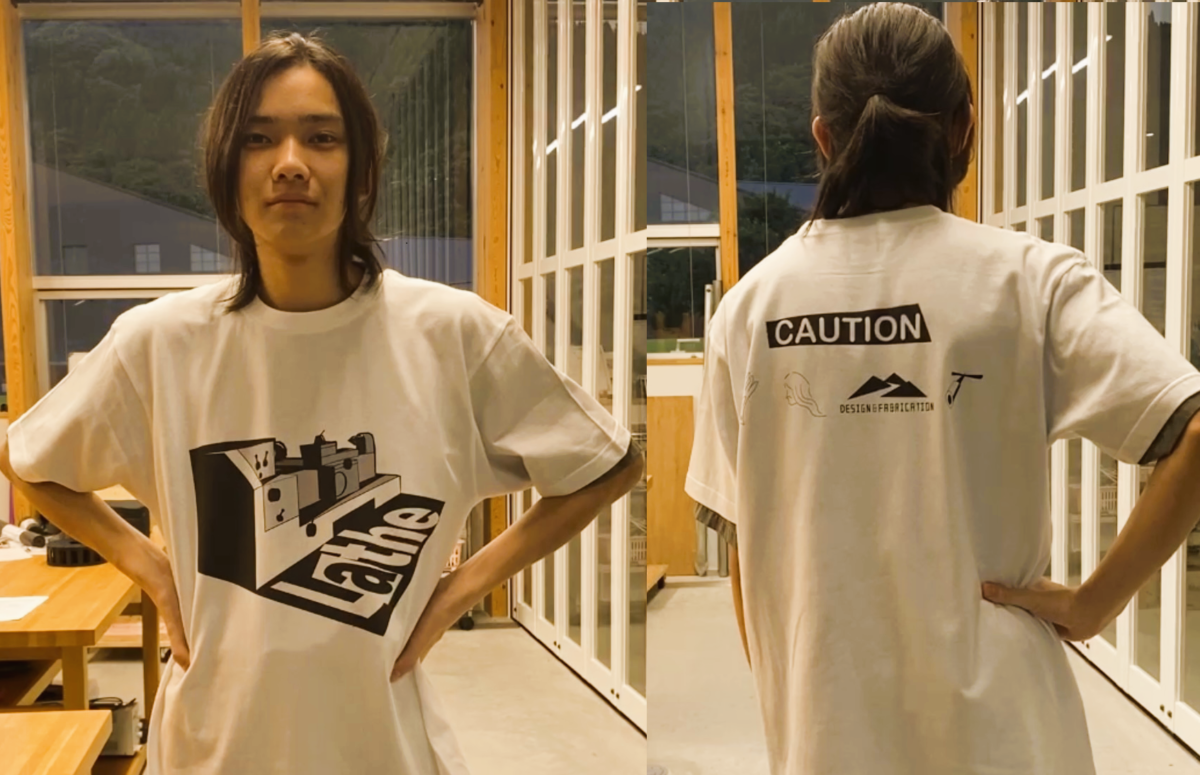
Shuntaro Tanaka, a 2nd year
I drew my favorite lathe in a stylish way, using perspective to give it depth and dimension.
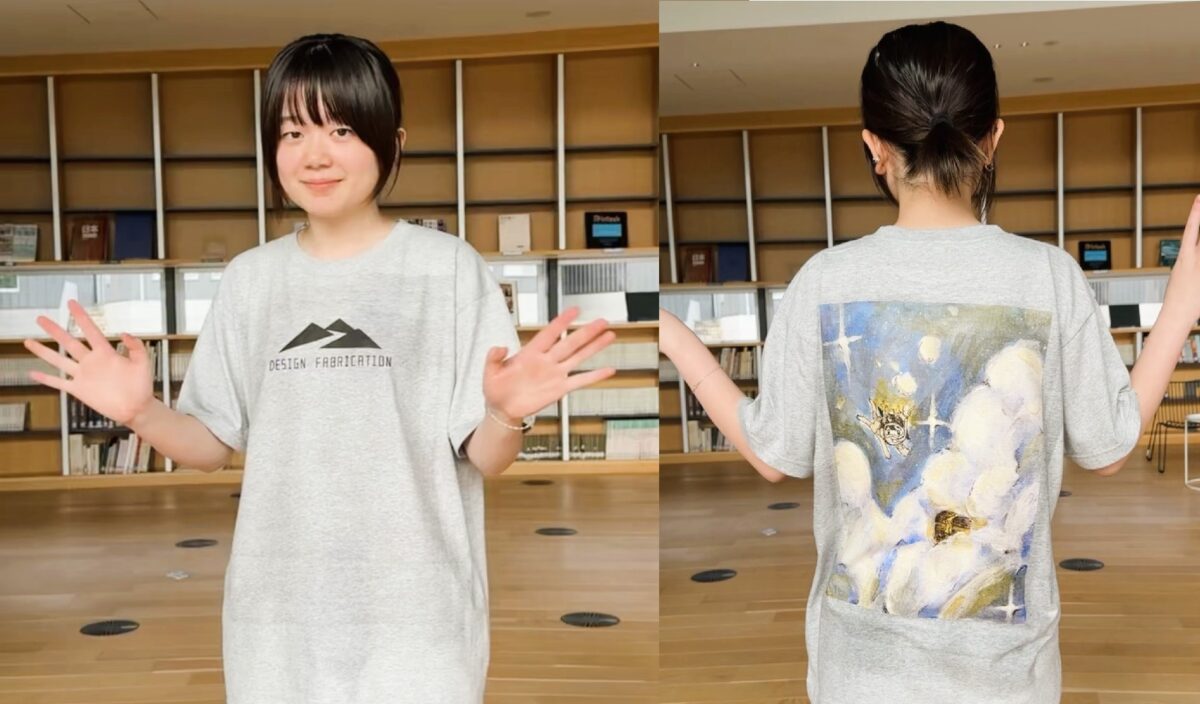
Shuntaro Tanaka, a 2nd year
I photographed my painting that was created for an exhibition themed "Deep Sea" at the Platinum Festival, and edited the image to create this T-shirt.
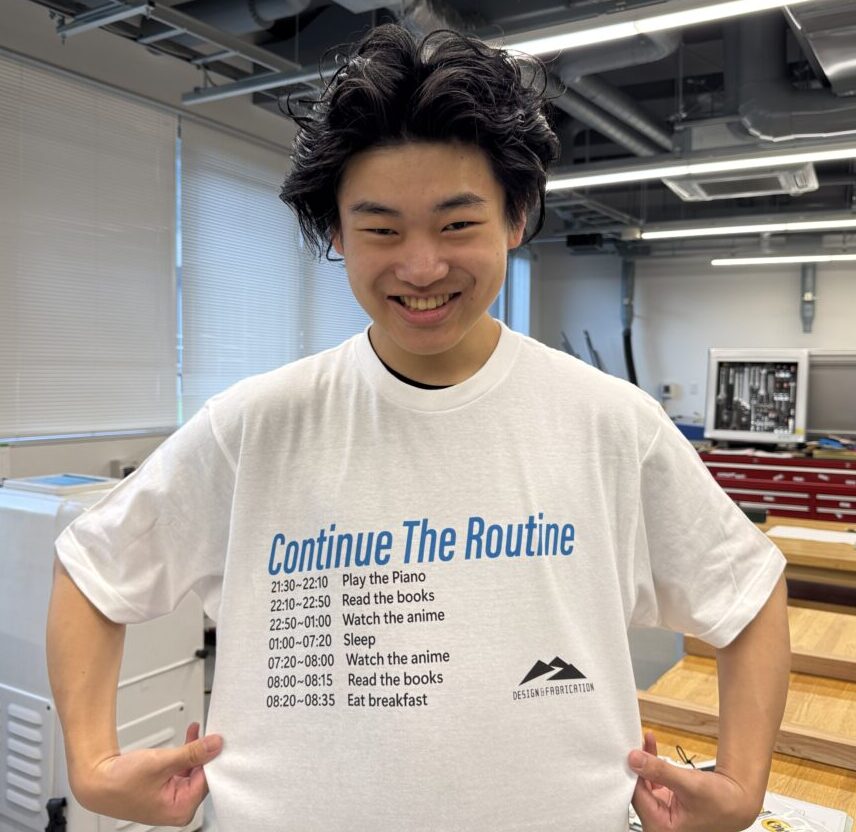
Ikki Hashimoto, a 2nd year
Recently, I've developed a personal routine that brings a strong sense of fulfillment to my daily life, so I created this with the intention of continuing that lifestyle.
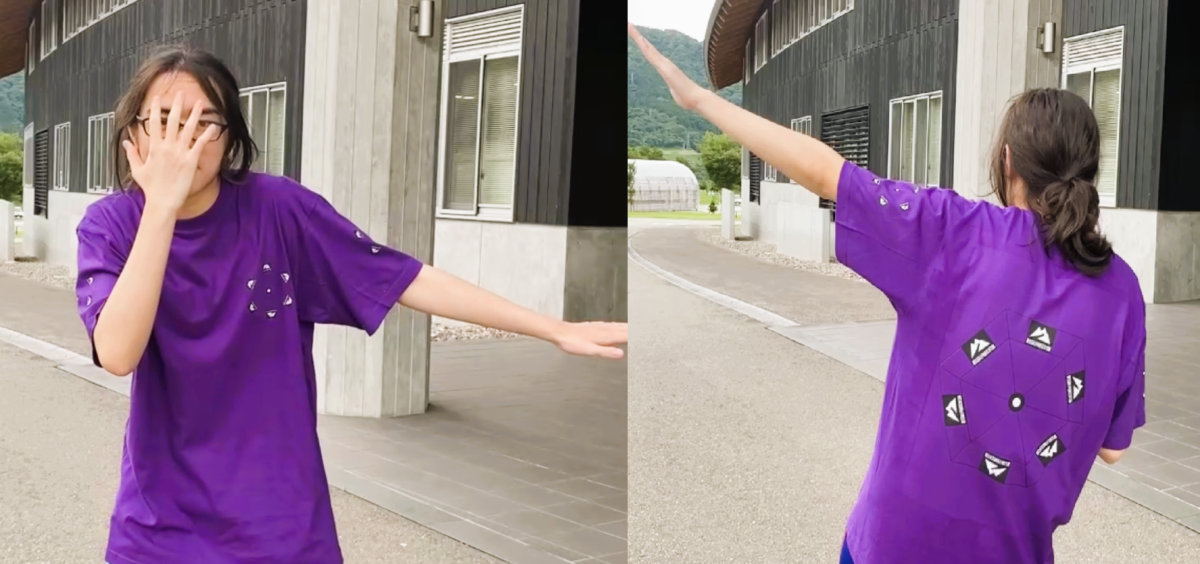
Chihiro Fukumoto, a 2nd year
I was inspired by the Galatic Empire emblem from my favorite movie, Star Wars, when I drew this. I reimagined the emblem in an ICT style.
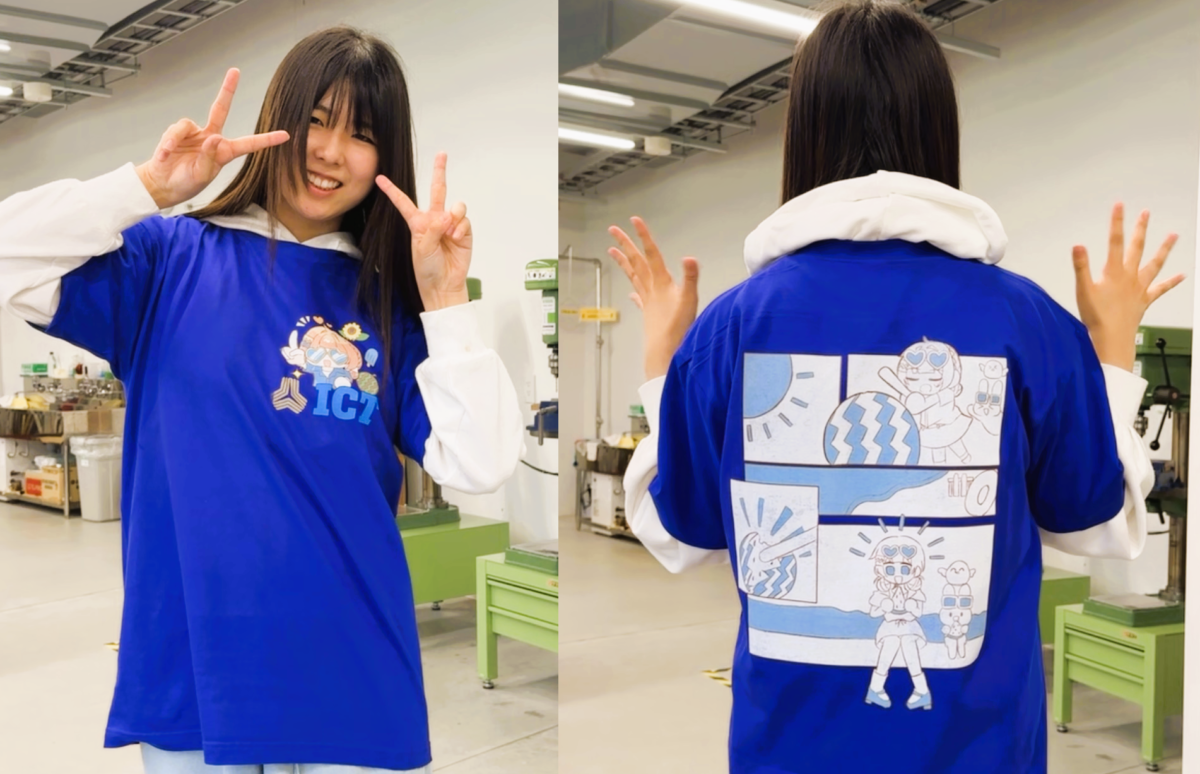
Kotori Mae, a 2nd year
I was inspired by summer, so I designed the back with a manga style watermelon splitting theme!
Meguru Ito
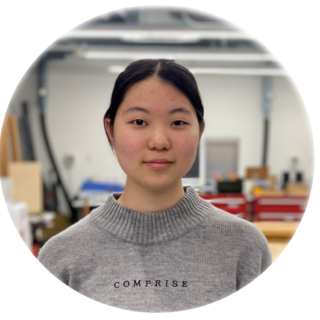 Hello. I'm Rinse Okiyama, a 3rd year student at the International College of Technology, Kanazawa. I'm currently studying abroad in New Zealand. Here in Dunedin, the weather is gradually warming up as spring approaches. Since arriving, I've been learning a lot every day through language study and cultural exchange. Living in a different environment isn’t easy, but it's full of new discoveries, and I can truly feel myself growing each day.
Hello. I'm Rinse Okiyama, a 3rd year student at the International College of Technology, Kanazawa. I'm currently studying abroad in New Zealand. Here in Dunedin, the weather is gradually warming up as spring approaches. Since arriving, I've been learning a lot every day through language study and cultural exchange. Living in a different environment isn’t easy, but it's full of new discoveries, and I can truly feel myself growing each day.
While people in Japan were diving into the sea, I was diving into the snow on the ski slopes of New Zealand. My friends and I took a bus and rode for an hour. Outside the window, lush green hills and flocks of sheep stretched out before us, revealing one beautiful scene after another—views unlike anything we’re used to seeing in Japan. Dunedin, where we live, is a suburban area, so we don’t often see farms, making the scenery feel refreshing.
We arrived in Roxburgh and had lunch at “Jimmy’s Pies,” famous for their meat pies. Next, we headed to “Puzzling World,” a mysterious space where you can enjoy a maze and optical illusion art. We got completely lost in the maze, feeling like little kids again. It was quite a challenge, and we ended up walking around for hours, but we finally made it to the end.
After checking into our accommodation in Wanaka, I took a walk with my friends to a nearby lake. Along the way, we discovered a stylish café and enjoyed some ice cream. After exploring the town on the first day, we returned to the lodge and enjoyed a warm dinner that our teachers had prepared for us.
The next day, we left our lodge early in the morning and took a bus to the ski fields, enjoying the sunrise along the way. Whether it was the driver’s rough style or the poor road conditions, the ride was bumpy the entire time. When we arrived, I was worried because there didn’t seem to be much snow, but the ski slopes were actually well-covered. Since I had just skied at Hakusan earlier this year, I got used to it quickly and had a great time.
Japanese ski resorts are known for their convenience, with abundant hot springs and lodging facilities. In contrast, New Zealand’s major advantage was the chance to experience the grandeur of nature itself. The scenery was totally different, featuring numerous courses with exposed rock faces, vast treeless slopes, and majestic mountain ranges stretching across the landscape.
At night, I went to a restaurant and took a walk around the lodge with my friends. Later, back at the lodge, we all gathered together as if we were back in the dormitory at Hakusanroku Campus and played a quiz game. It felt like those nostalgic and fun times were back again.
The third day was all about activities. Arriving in Queenstown, we took a gondola to the summit and looked down on the town. The view of the blue lake and surrounding mountains was stunning in its beauty. After that, we tried the Luge, a thrilling activity where you race down a steep slope at full speed. We all enjoyed it.
For lunch, we bought the tastiest burgers, known as “Fergburger.” Unfortunately, our schedule was packed, so we didn’t have time for sightseeing. At the final destination of our trip, three classmates challenged themselves to bungee jump. After jumping, they looked proud and relieved, having overcome their nerves. After that, we headed back to Dunedin, and the fulfilling three-day trip finally came to an end.
This ski trip was a valuable opportunity to deepen bonds with my friends and experience the differences in nature and culture firsthand. I want to continue challenging myself in various ways and make my study abroad life even more fulfilling.
Rinse Okiyama









